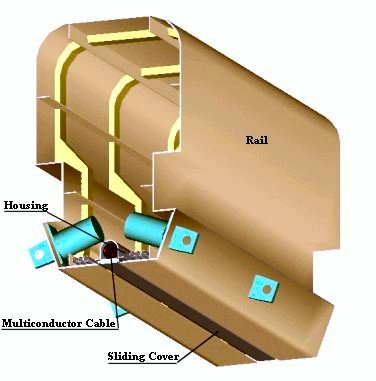![]()
The communication between the head and the control surfaces, the engines, landing gear, lights, etc, is carried out with the system “Fly-by-Wire”. Two redundant multiconductor cables connect the head with the box of the wing. When the airplane loads a container, the cables unfold lodging inside the rails. When the container is discharged and the head occupies the rear position under the wing, the cable bends automatically in its lodging located in the superior part of the head. The low face of the rails is endowed with a sliding cover that displaces fixed with the head. The cover function is for guide and protection of atmospheric effects on the cables.


Command cable (fly-by-wire double and redundant) deployed between the head and the wing box, when the aircraft operates with container

Automatic folding of the command cable between the head and the wing box (wing-rails union), when the aircraft operates without container

- Antonio Sánchez 1997-2007. Málaga. Spain